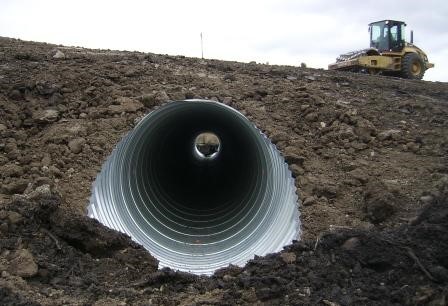Thorough Underbrush Clearing for Land Management
Thorough Underbrush Clearing for Land Management
Blog Article
Mastering Culvert Setup: Increase Your Land Drain Efforts
Reliable land drain is a critical component of effective agricultural and facilities tasks. Culverts play a significant duty in taking care of water circulation and preventing erosion, making their correct setup crucial. From picking the best products to applying best practices, understanding culvert installation can substantially improve the effectiveness and durability of your land drainage system. By recognizing the ins and outs of culvert installment, you can enhance your drainage efforts and make sure sustainable land use methods.
Significance of Culvert Installation
Making certain proper culvert setup is paramount for maintaining effective land drain systems. Correct installation of culverts helps to direct water away from roads and structures, decreasing the danger of flooding and water damage.
Proper Sizing and Positioning

Proper positioning of culverts is similarly critical. Culverts need to be placed at the most affordable factor of the location requiring drain to guarantee efficient water circulation. In addition, they should be installed perpendicular to the natural slope of the land to avoid obstructions and enable smooth water passage. Strategic positioning can help prevent waterlogging, dirt erosion, and road damages, guaranteeing the longevity and efficiency of the land drain system.
Product Choice Tips
Selecting the best materials is extremely important in ensuring the durability and capability of culverts for reliable land drainage systems. When choosing materials for culvert installment, it is vital to take into consideration elements such as the water flow rate, soil make-up, and environmental conditions of the website.
One of the most typical materials used for culverts is corrugated steel. Concrete culverts are excellent for locations susceptible to corrosion or when a much longer service life is preferred.
For ecologically delicate areas, plastic culverts may be favored. Furthermore, in locations where natural appearances are vital, materials like rock or timber can be made use of to build culverts that blend flawlessly into the environments.
Installment Strategies and Best Practices
Offered the crucial significance of material option in making sure the functionality and durability of culverts, the setup strategies and finest techniques play a crucial duty in the general success of land drainage systems. Correct installment is essential to stop problems such as leaks, breaks down, or blockages that can jeopardize the efficiency of the culvert.

Throughout setup, care has to be required to line up the culvert correctly and supply web link appropriate assistance to avoid contortion. Backfilling should be done gradually and compressed in layers to avoid spaces and settlement. Proper compaction is vital to protect against shifting or sinking of the culvert gradually.

Upkeep and Long-Term Care
Implementing an extensive maintenance strategy is necessary for making sure the long life and efficient efficiency of culverts in land water drainage systems. Cleaning debris such as fallen leaves, branches, and sediment is vital to protect against obstructing and preserve the flow ability of the culvert.
Routine maintenance jobs may include cleansing, repairing joints, enhancing inlet and electrical outlet structures, and guaranteeing correct slope and positioning of the culvert. Maintaining detailed records of upkeep activities, examinations, and repair services is essential for tracking the condition of the culvert over time and intending future upkeep needs.
Final Thought
To conclude, understanding culvert installation is vital for efficient land water drainage. Appropriate sizing, positioning, product option, installation strategies, and upkeep are Culvert installation vital variables to consider. By adhering to ideal techniques and implementing long-term treatment approaches, landowners can boost their water drainage initiatives and make sure the use this link durability and performance of their culverts. It is important to focus on these elements to stop water damage, disintegration, and various other costly concerns on the home.
Report this page